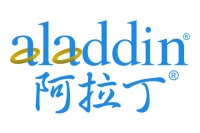Glycan-processing enzymes such as glycosyltransferases and glycosidases are responsible for the makeup of the glycome. The definition of their substrate specificities is, therefore, a central task in glycomics. In addition, these enzymes are themselves useful synthetic tools for the generation of complex carbohydrate structures as an alternative to tedious chemical synthesis. There has been great interest in using microarrays for studying these glycoenzymes because it allows the specificity of the enzyme to be probed against a panel of immobilized potential substrates, and also expands the repertoire of sugar arrays available for further carbohydrate–protein interaction studies. In particular, self-assembled monolayers (SAMs) of alkanethiols on gold surfaces have proven to be a valuable platform for such studies due to their robustness and their biocompatible, well-defined structure. Furthermore, a direct observation of the change in mass of immobilized substrates due to enzymatic processing is possible through label-free MALDI-ToF MS (matrix-assisted laser desorption/ionization time-of-flight mass spectrometry) technique. In this chapter, we describe the preparation of SAMs-coated gold surface arrays presenting carbohydrate or (glyco)peptide substrates, either pre-formed or directly synthesized on-chip, and MALDI-ToF MS analysis of glycosyltransferase activities on these immobilized substrates.






